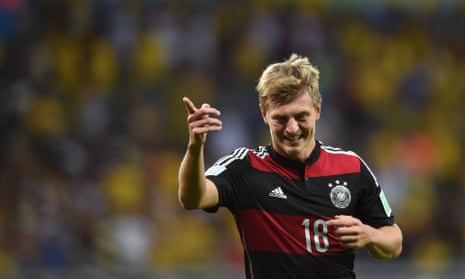As the 25th anniversary of the fall of the Berlin wall approaches, the divide between west and east German teams can still be seen in the domestic leagues.
Only four teams from the former German Democratic Republic (GDR) have reached the Bundesliga out of the 38 that have played in the top tier of the German league system since the 1993-94 season. Hertha BSC, the only Berlin team to reach the top tier in this period, was located west of the Berlin wall.
Comparing the total goal tally from seasons 1993-94 to 2013-14, which we have done in the map below, emphasises where the stronger clubs in recent years reside.
The highest scoring Bundesliga side has been FC Bayern Munich, while all four clubs of East German origin are below the league average. Hansa Rostock, often considered the most successful Eastern side, has the median total goals scored over the observed period.
The cumulative goal difference between western and eastern teams over the 21 seasons we looked at shows that the extent of the divide has not been consistent.
The toughest period for the eastern sides was during the 2000-05 period, where the goal difference more than doubled from 103 to 235. In contrast the difference only rose from 84 to 110 in the five years following the end of the 1994-1995 season. Since 2009 there have been no eastern teams in the Bundesliga.
Germany’s 2014 World Cup squad shows a similar geographical dispersion. Only one player (Toni Kroos) was born in the former GDR shortly after the Berlin wall fell, while Klose and Podolski were both born in Poland which was then a satellite state of the Soviet Union.
When reunification happened, west Germany had roughly four times the inhabitants as east Germany so it’s unsurprising that the former may have some dominance over the latter.
The top ranked east German side currently are RB Leipzig, who are fourth in the German second division (Bundesliga 2). Time will tell whether they or any other of the sides based in the former GDR will have a chance to redress the balance.

Comments (…)
Sign in or create your Guardian account to join the discussion